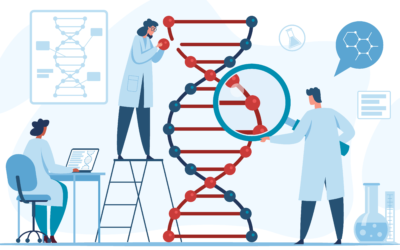The silent progression of type II diabetes (T2D) poses a significant challenge in modern healthcare. Often asymptomatic in its early stages, T2D can wreak havoc on the body for years before clinical symptoms manifest. This underscores the critical importance of early detection and intervention. While traditional diagnostic methods like fasting plasma glucose (FPG), oral glucose tolerance tests (OGTT), and hemoglobin A1c (HbA1c) have been the cornerstones of diabetes diagnosis, emerging research suggests that relying solely on these metrics, particularly HbA1c, may lead to missed opportunities for early intervention. This comprehensive blog post explores the limitations of HbA1c, compares it to other assessment methods, and discusses the benefits of a multi-faceted approach to metabolic health evaluation.
Table of Contents
Understanding Metabolic Health and Its Importance
Metabolic health encompasses the efficiency and functionality of an individual’s metabolism – the complex process of converting food into energy. It plays a crucial role in overall well-being, affecting weight management, energy levels, and disease risk. Optimizing metabolic health can significantly improve quality of life and reduce the risk of chronic diseases.Factors Influencing Metabolism:
- Genetics
- Age
- Gender
- Diet
- Physical activity level
- Hormonal balance
- Underlying health conditions
The Progression of Metabolic Dysfunction
The journey from optimal metabolic health to T2D is often a gradual process, characterized by several key stages:
- Insulin Resistance (IR): This early hallmark of metabolic disease can precede T2D by 10 to 15 years. In this stage, cells become less responsive to insulin, requiring higher levels to maintain normal blood glucose.
- Compensatory Hyperinsulinemia: As IR progresses, the pancreas produces more insulin to overcome cellular resistance and maintain normal blood glucose levels.
- Beta-cell Fatigue: Eventually, the constant demand for high insulin production leads to “beta-cell fatigue,” where pancreatic beta cells struggle to produce sufficient insulin.
- Prediabetes: Blood glucose levels begin to rise above normal but not yet to diabetic levels.
- Type 2 Diabetes: Beta cells can no longer produce enough insulin to maintain normal blood glucose levels, resulting in chronic hyperglycemia.
This slow progression makes early detection crucial, as interventions at the IR or prediabetes stage can potentially reverse the process and prevent T2D development.
Traditional Diagnostic Methods: A Historical Perspective
The journey of diabetes diagnosis has evolved significantly over time:
- Ancient Methods: Diabetes was initially detected by observing symptoms like frequent urination and excessive thirst. Primitive diagnostic techniques included testing whether ants were attracted to a patient’s urine or having physicians taste the urine for sweetness.
- Early 20th Century: The development of methods to measure plasma glucose led to the use of fasting and post-glucose loading tests.
- Standardization in 1979: The 2-hour, 75-g glucose load protocol for OGTT was established, and a fasting plasma glucose (FPG) of ≥140 mg/dl was set as a threshold for T2D diagnosis.
- 1997 Revision: FPG criteria were updated to the current standards: T2D is diagnosed by an FPG of ≥126 mg/dl or plasma glucose of ≥200 mg/dl two hours after a 75-g glucose drink in an OGTT.
- Introduction of HbA1c: Discovered in the late 1960s, HbA1c was not recommended for T2D diagnosis until 2009 due to previous lack of standardization in laboratory measurements.
The Rise and Limitations of HbA1c
Hemoglobin A1c (HbA1c) has become a cornerstone in diabetes diagnosis and management due to its convenience. It reflects average blood glucose levels over the past 2-3 months, providing a longer-term view of glycemic control. However, relying solely on HbA1c has several limitations:
- Dependence on Red Blood Cell (RBC) Lifespan: HbA1c is based on the assumption of a standard 120-day RBC lifespan. Conditions affecting RBC turnover can lead to inaccurate results:
- Iron, vitamin B12, or folate deficiency anemia can artificially increase HbA1c.
- Conditions like chronic kidney disease or sickle cell anemia can decrease HbA1c.
- Genetic Hemoglobin Variants: Some genetic variations in hemoglobin structure can interfere with HbA1c measurements.
- Insensitivity to Glycemic Variability: HbA1c provides an average and doesn’t capture daily glucose fluctuations or postprandial spikes.
- Delayed Response to Changes: It takes weeks to months for HbA1c to reflect recent changes in glycemic control.
- Poor Correlation in Some Individuals: Studies have shown that in some people, HbA1c doesn’t accurately reflect average glucose levels measured by other methods.
- Missed Early Metabolic Dysfunction: HbA1c may not detect early stages of insulin resistance or postprandial hyperglycemia.
The Power of Oral Glucose Tolerance Test (OGTT)
While more time-consuming than HbA1c testing, OGTT provides valuable insights into glucose regulation and insulin response:
- Comprehensive Assessment: OGTT evaluates both fasting and post-load glucose levels, offering a more complete picture of glucose metabolism.
- Early Detection of Insulin Resistance: By measuring both glucose and insulin levels during the test, OGTT can identify insulin resistance before fasting glucose becomes abnormal.
- Postprandial Glucose Evaluation: OGTT mimics the body’s response to a meal, revealing issues with glucose disposal that may not be apparent in fasting tests.
- Diagnosis of Gestational Diabetes: OGTT remains the gold standard for diagnosing diabetes during pregnancy.
- Identification of Reactive Hypoglycemia: OGTT can detect abnormal glucose drops after the initial spike, which may indicate other metabolic issues.
OGTT Procedure:
- Fast for 8-12 hours
- Baseline blood draw
- Consume 75g glucose solution
- Blood draws at 30-minute intervals for 2-3 hours
- Measure both glucose and insulin levels
While OGTT is more labor-intensive than HbA1c testing, its ability to detect early metabolic dysfunction makes it an invaluable tool, especially for individuals at high risk of developing T2D.
Continuous Glucose Monitoring (CGM): A Window into Daily Glycemic Patterns
Continuous Glucose Monitoring (CGM) technology has revolutionized our understanding of glucose dynamics:
- Real-time Data: CGM provides glucose readings every 5-15 minutes, offering unprecedented insight into daily glucose patterns.
- Capture of Glycemic Variability: CGM reveals the peaks and troughs in glucose levels that static tests miss, which may be important indicators of metabolic health.
- Personalized Insights: Users can correlate glucose changes with meals, exercise, stress, and sleep, enabling targeted lifestyle interventions.
- Early Detection of Dysglycemia: CGM can identify abnormal glucose patterns before they’re reflected in HbA1c or fasting glucose tests.
- Motivation for Behavior Change: Real-time feedback can encourage healthier eating habits and increased physical activity.
Limitations of CGM:
- Cost and accessibility
- Need for frequent calibration (in some models)
- Potential skin irritation from sensors
- Risk of information overload for some users
The Emergence of Over-the-Counter CGMs
Recent FDA approvals have made CGM technology more accessible to the general public:
- Dexcom Stelo: The first over-the-counter CGM approved in the U.S., designed for people with or at risk of developing T2D who don’t use insulin.
- Abbott’s Lingo and Libre Rio: Additional OTC CGM options, with varying features and target populations.
These devices differ from prescription CGMs in measurement frequency, lifespan, and features like alarms for hypo/hyperglycemia. While they increase accessibility, it’s important to note that they may have lower precision compared to prescription models.
A Comprehensive Approach to Metabolic Health Assessment
Given the limitations of individual tests, a multi-faceted approach to metabolic health assessment is recommended:
- Combine Static and Dynamic Tests:
- Use HbA1c and fasting glucose for baseline measurements
- Incorporate OGTT for a more comprehensive evaluation
- Consider CGM for detailed, real-time glucose data
- Look Beyond Glucose:
- Assess insulin levels, especially during OGTT
- Evaluate other metabolic syndrome markers (lipid profile, blood pressure)
- Consider body composition analysis
- Personalize the Approach:
- Consider individual risk factors (family history, lifestyle, etc.)
- Tailor testing frequency based on initial results and risk profile
- Interpret Results in Context:
- Consider factors that may affect test accuracy (e.g., anemia affecting HbA1c)
- Look at trends over time rather than single data points
- Early Intervention:
- Use comprehensive testing to detect metabolic dysfunction at its earliest stages
- Implement lifestyle interventions (diet, exercise, stress management) based on personalized data
Conclusion
While HbA1c remains a valuable tool in diabetes management, its limitations highlight the need for a more comprehensive approach to metabolic health assessment. By combining traditional tests like OGTT with emerging technologies like CGM, healthcare providers can gain a more accurate and nuanced understanding of an individual’s metabolic health. This multi-faceted approach enables earlier detection of metabolic dysfunction, allowing for timely interventions that can potentially reverse the progression towards T2D and improve overall health outcomes.As our understanding of metabolic health continues to evolve, so too should our diagnostic and monitoring strategies. By embracing a more comprehensive and personalized approach to metabolic health assessment, we can empower individuals to take control of their health and prevent the devastating consequences of uncontrolled diabetes.





0 Comments